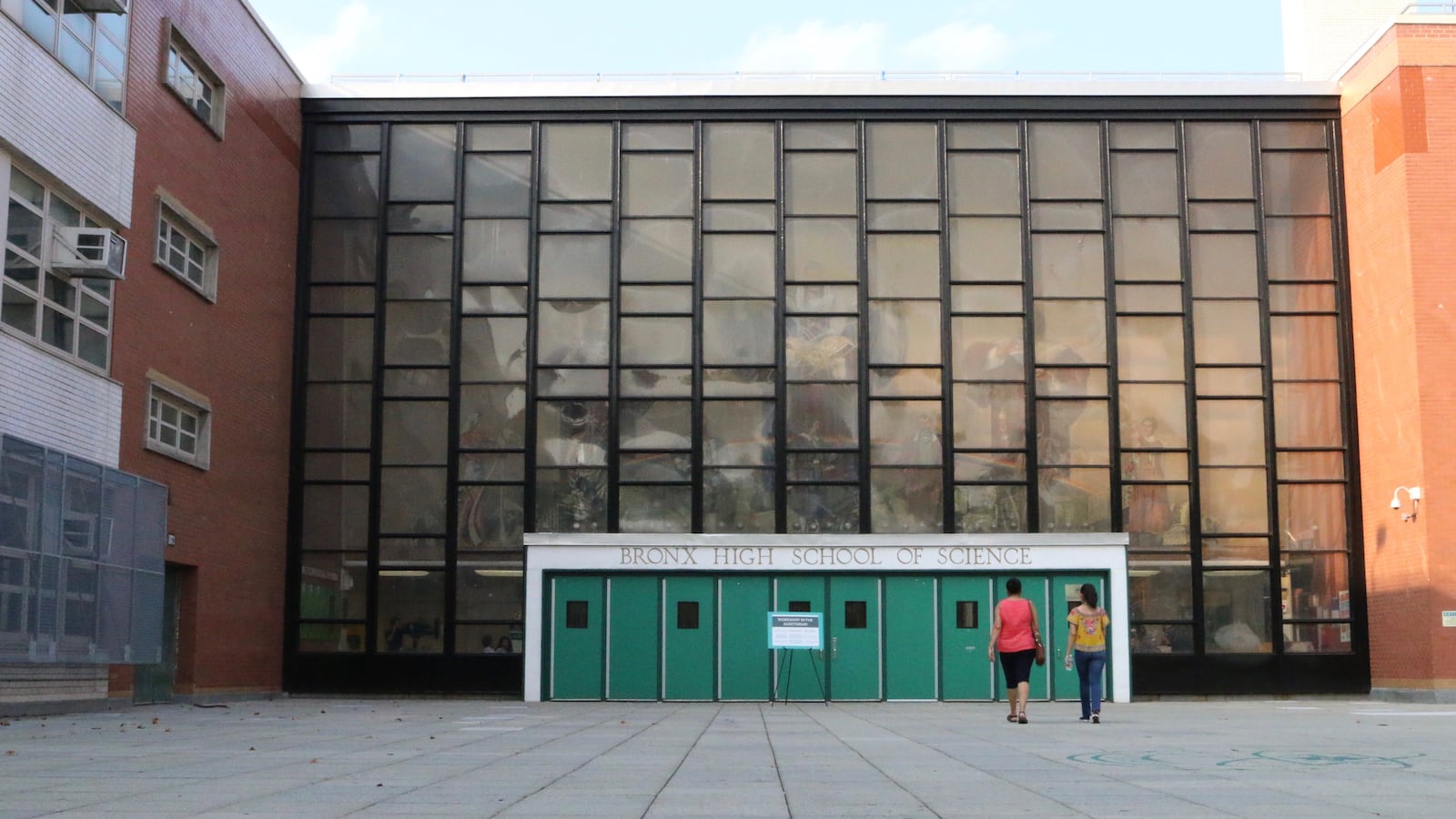New York City’s prized specialized high schools will remain starkly segregated as the number of black and Hispanic students offered seats for next year’s freshman class remained stubbornly low, according to education department data released Thursday.
Only 4.5% of offers went to black students and 6.6% went to Hispanic students, virtually unchanged from last year. Citywide, black and Hispanic students make up almost 70% of enrollment.
Once again, a majority of offers went to white students (25.1%) and Asian students (54%).
The figures were a stark reminder that Mayor Bill de Blasio’s efforts to integrate the schools — which he’s dialed back this year — have failed to win support. In pushing for admission changes, the mayor unsuccessfully lobbied state lawmakers, who must approve any admissions changes to the city’s three largest specialized high schools, Brooklyn Tech, Stuyvesant, and Bronx Science.
At Stuyvesant, the most competitive of the specialized high schools, only 10 offers went to black students — out of 766 total offers. At Staten Island Technical, only one black student was offered admission, the same number as last year. The number of Hispanic students offered a seat at Stuy dropped to 20 from 33, and at Staten Island Tech, only eight Hispanic students received offers, from 11 the year before.
“Diversity in our specialized high schools remains stagnant, because we know a single test does not capture our students’ full potential. I am hopeful we’ll move towards a more equitable system next year,” Carranza said in an emailed statement.
New York City’s school system is among the most segregated in the country, and some integration advocates say the city could accomplish more by focusing beyond this small subset of schools. But the specialized high schools loom large in the city’s psyche given their vaunted reputations, and a high-profile debate has raged for years over changing the admissions process in an attempt to increase their numbers of black and Hispanic students.
Eight of the specialized high schools admit students based solely on the results of the Specialized High Schools Admissions Test, or SHSAT. (A ninth, Fiorello H. LaGuardia, is a performing arts school that admits students by audition.) This year, 27,800 eighth-graders took the test, and 4,265 received offers.
The schools’ demographics could change by the time classes start in September (barring an extended citywide school closure due to the coronavirus). In an attempt to better integrate the schools, the city has dramatically expanded Discovery, and changed who qualifies for the program, which offers admission to students who score below the test score cutoff and attend summer classes. This year, 20% of offers will go to students in the program — accounting for about 800 seats. That’s up from 13% for the current school year.
So far, Discovery has not led to significant shifts in who is admitted to the specialized schools. And the city’s changes to the program have sparked a legal challenge which is still winding its way through the courts, about a year after it was filed.
Efforts to change the state law over specialized high school admissions have failed. De Blasio almost two years ago proposed scrapping the admissions test and instead admitting the top 7% of students at each city middle school. His idea faced massive pushback, including from Asian-American families who felt such a process would unfairly elbow out their children, many of whom are low-income.
Others have argued the answer lies in expanding access to gifted and talented classes, which are also deeply segregated. A multimillion dollar lobbying campaign, supported by activist Rev. Kirsten Foy, has pushed for more gifted and talented programs, more specialized high schools, and more access to test preparation.
This year, the mayor signaled that a new approach was needed after admitting that he had fallen short in reaching out to Asian-American families.
Some lawmakers, who were in his corner, have changed course and instead want to repeal the law that says an admissions test is required for entry into the city’s three largest specialized high schools. Chancellor Richard Carranza has also advocated for repealing that law, but there has been no apparent movement in Albany on that front, either.
Despite the furor over the schools, there is evidence they may not be the springboards that many assume them to be — partly because the students who attend them are already primed for success.
With schools closed through at least April 20 due to the coronavirus pandemic, open houses for the specialized schools have been canceled. The education department said families should reach out to schools to determine whether they’ll hold an alternative event. At Stuyvesant, for example, a message on the school’s website says the open house will happen virtually.
Students vying for a spot at the specialized schools were not the only ones who learned where they’ll be headed next year.
All New York City students must apply to high schools. Overall, more than 78,000 eighth-graders submitted applications, ranking up to 12 choices and then being matched to a school through an algorithm similar to the one medical schools use.
About 46% of rising ninth graders received admission to their first-ranked school, and 73% of students were admitted to one of their top three choices. Those percentages were similar to the year before.
For the first time, there is no second admissions round for students. Instead, students who were not accepted to their top-choice schools will be added to waitlists — though city officials have admitted the change won’t likely lead to many students being accepted to higher-ranked schools.
[Related: Everything you should know about NYC’s new waitlist system for high school admissions]
Almost 44,000 students — who did not land their first choice school — will automatically be added to a waitlist.

